THE “IMMERSIVE EXPERIENCE” AWARD
This award recognizes the most successful immersive experience embedded in the Teach on Mars technology. 3 criteria are evaluated:
- Meaning and motivation (context, stakes, objectives)
- Analysis of the content (architecture, graphic and editorial style, interactivity)
- Learner experience
Nespresso won the jury’s “coup de coeur” award in this category!
THE “COUP DE COEUR” WINNER
Nespresso
Located in Switzerland and more precisely in Lausanne, Nespresso is a subsidiary of the Nestlé Group created in 1986.
A pioneer in the invention of the integrated coffee concept, Nespresso created its coffee machines, its capsules and its Club based on a simple but revolutionary idea: to allow everyone, like the most experienced baristas, to prepare a perfect Espresso.
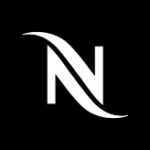
Nespresso and Teach on Mars
Nespresso has adopted the Teach on Mars solution from 2020. BOOST, its application, has been deployed in more than 30 countries with the objective of :
- train employees in contact with customers;
- develop knowledge and skills through a more engaging, intuitive and effective learning tool;
- provide new collaborative and social learning experiences.
THE WINNING COURSE: BEST PRACTICES
The context
At Nespresso, more than 10,000 employees are in daily contact with customers, which is why sales and customer experience are at the heart of the skills development plan.
While Nespresso already offers numerous training courses on the sales ceremony, they wanted to innovate their approach in order to meet the following 3 challenges :
- High turnover in the sales sector,
- New learning styles of generation Z,
- Need to acquire knowledge quickly.
This is how the “Customer Stories” training program on the BOOST application was born, in order to reinforce the skills of salespeople on the sales ceremony in a very practical and concrete way.
Peer-learning to foster engagement
“The idea is great: TV series treatment, real life training, peer-to-peer experience sharing, local languages, richness and diversity, authentic stories!”
Sophie Malivert, Global Retail Education Director, Maisons du Monde
The concept of “peer-learning” was developed by Eric Mazur, Professor at Harvard University, in the early 1990s. It is a “horizontal” learning technique in which learners are both recipients and transmitters of knowledge. In the context of the company, it is a matter of learning from one’s colleagues, without going through the transmission channel of the trainer. The latter, if present, acts as a facilitator. Peer learning is thus based on collaboration and the sharing of information or experiences.
Nespresso has thus reinvested the “peer learning” method by launching a call to the field teams to share their experience.
The idea is that each employee who wishes to do so can share with his/her colleagues an anecdote, a story, a particular request from a customer and explain how he/she best responded to the customer’s needs and expectations.
The videos are all shot in the store by the salespeople themselves, allowing for a complete immersion (and are available in subtitled versions in many languages).
We share the daily life of :
- Dara in Indonesia advising a customer using her knowledge of profiling.
- Meghan in the UK detailing the art of asking the right questions to understand the client’s need.
- Eric in Switzerland succeeding in a cross-selling opportunity.
- Rob in Canada answering clients’ questions about Nespresso’s sustainability commitments.
- etc.
This sharing of experience also fosters a sense of belonging among Nespresso employees, who can see themselves in the sharing of their colleagues and measure the extent of the group’s multicultural dimension.
Integrating immersive videos into the overall experience
Beyond their quality, the strength of immersive videos also lies in the overall learning experience that surrounds them.
In fact, “Customer Stories” trainings include four stages of engagement:
Stage 1: Introduction of the story
A Nespresso coffee expert presents a specific sales scenario in the field.
Step 2: Anchoring test
This is followed by a fun activity to practice the expected skills/behaviors in similar situations. This is the step where learners can acquire/refresh their sales knowledge and self-assess their behaviors in similar scenarios.
Step 3: Continuation of the story
This is when learners discover the end of the story and gain useful information for handling similar situations with customers.
Step 4: Individual follow-up
For a more complete follow-up, the learner is invited to follow in-depth trainings on the topics covered.
Here is a complete illustrated example:
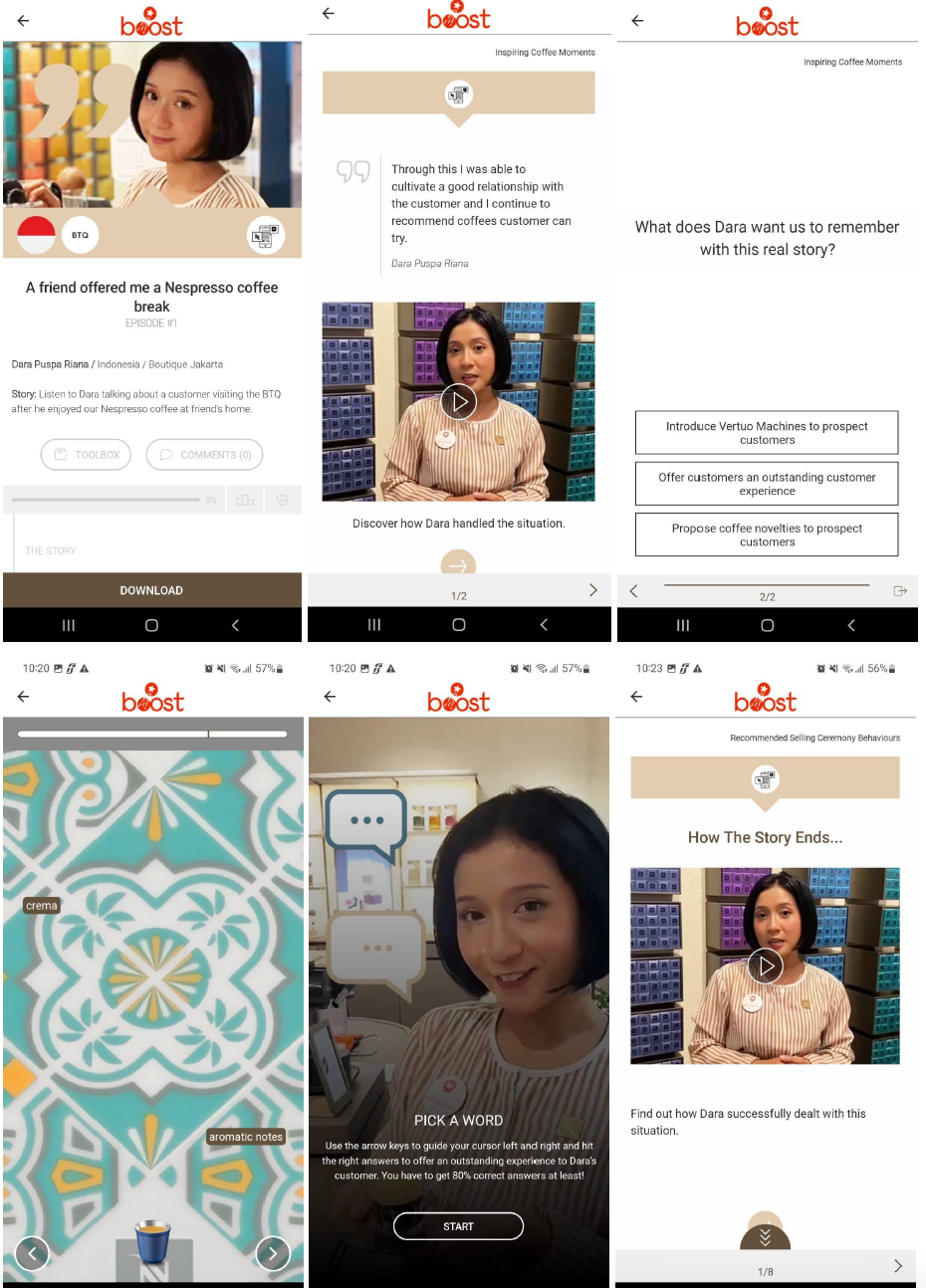
The “TV series” approach to build learner loyalty
First of all, the publication rhythm of the training courses is paced so that a new “Customer stories” training course is available every month.
Then, in order to communicate about this new training, a real promotion is set up using the codes of the TV series, so we talk about a new episode available (which are all numbered).
Discover the example of the promotion of episode 4 on the Wall of the BOOST app:
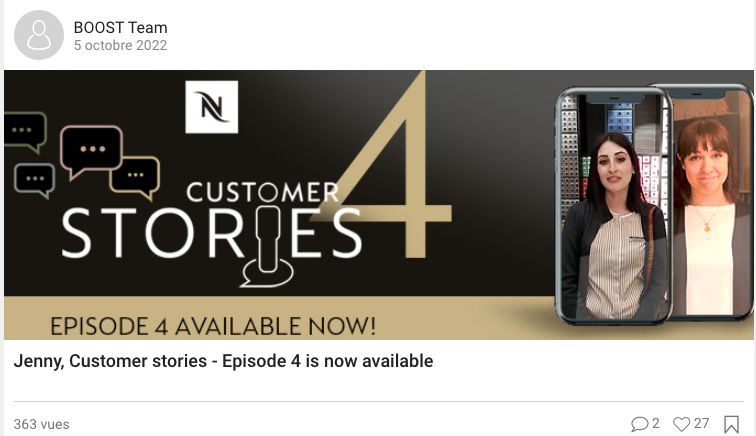
THINGS TO KEEP IN MIND ABOUT BEST PRACTICES
Thanks to the quality of this training system, Nespresso has obtained very good feedback regarding the commitment of its learners, with very good completion rates and learner satisfaction.
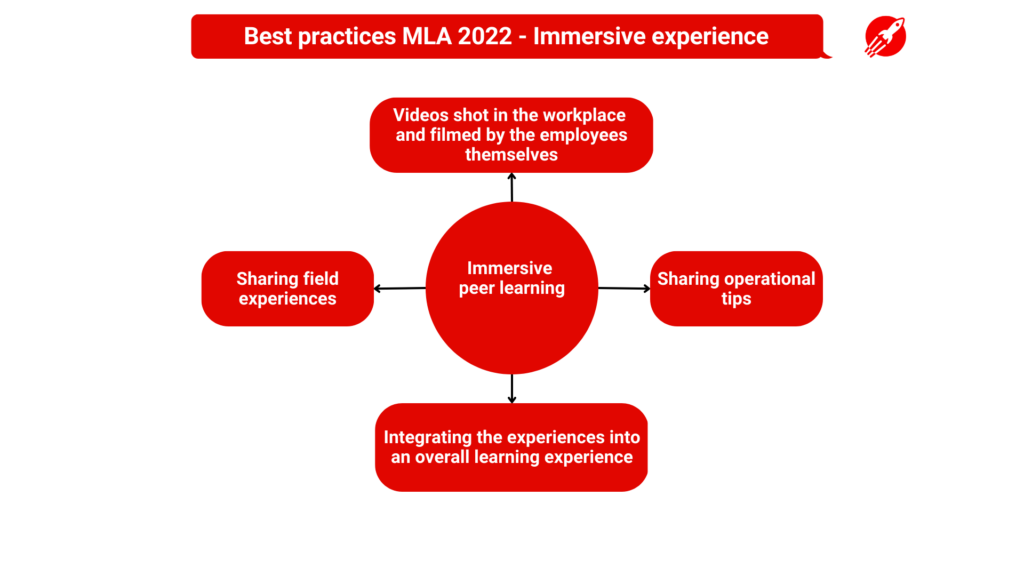
We hope these best practices will inspire you to immerse your learners!

D’abord éditrice de manuels scolaires, professeure et coordinatrice pédagogique à l’Université, Julia a rejoint l’équipe Learning Experience chez Teach on Mars pour apporter ses compétences en pédagogie. La gamification et la différenciation pédagogique sont notamment ses chevaux de bataille.

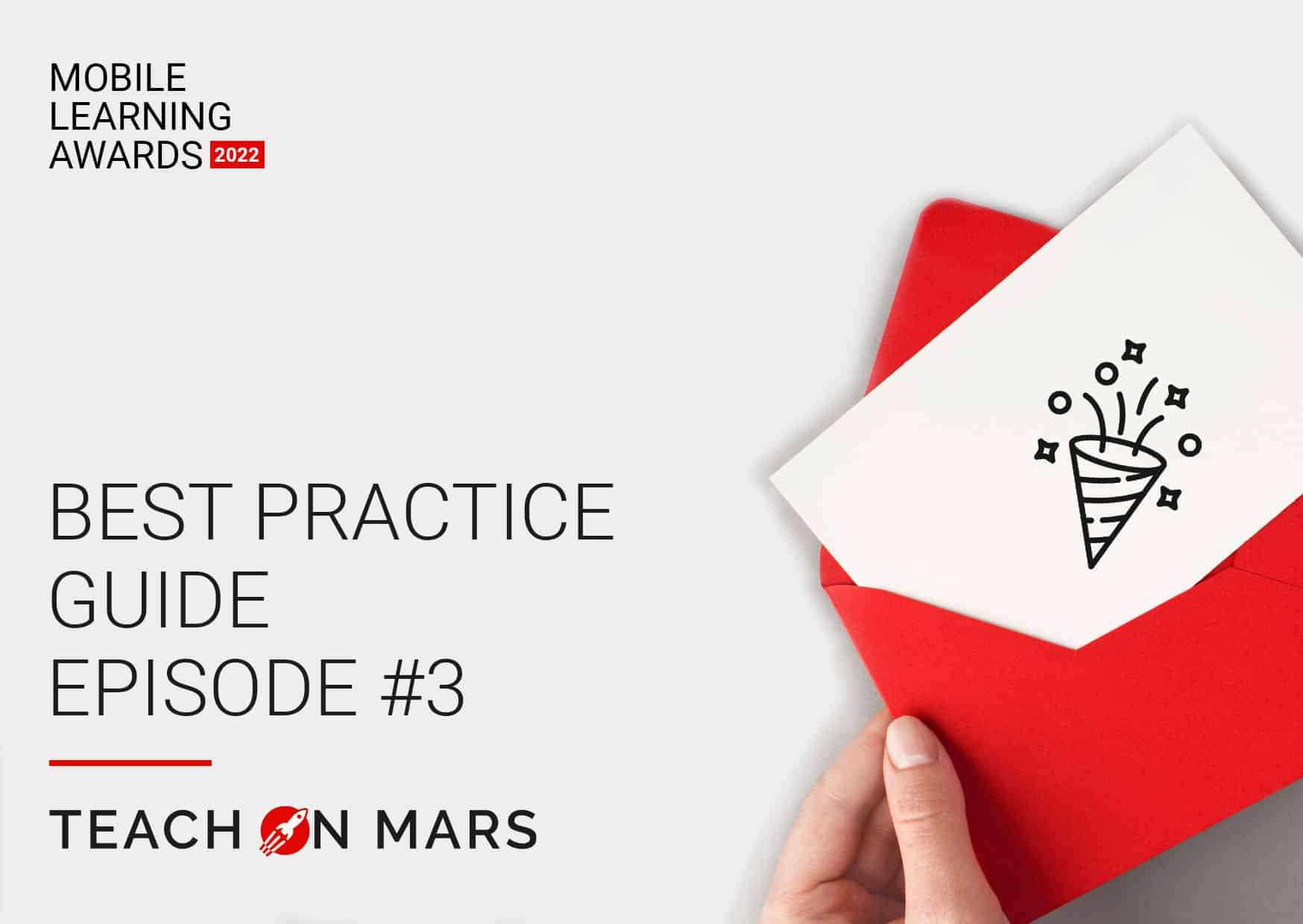
![[Mobile Learning Awards] Spotlight on IWC, winner of the Deployment Award, best practices guide](https://www.teachonmars.com/wp-content/uploads/2024/05/Visu_BestPracticesGuide3-400x250.png)
![[Mobile Learning Awards] Spotlight on Diptyque, winner of the Integrated Training Award, best practices guide.](https://www.teachonmars.com/wp-content/uploads/2024/04/visu_BestPracticesGuide2-400x250.png)
![[Mobile Learning Awards] Spotlight on Le Bon Marché, winner of the Native Training Award, best practice guide](https://www.teachonmars.com/wp-content/uploads/2024/03/Visu_BestPracticesGuide1-1-400x250.png)